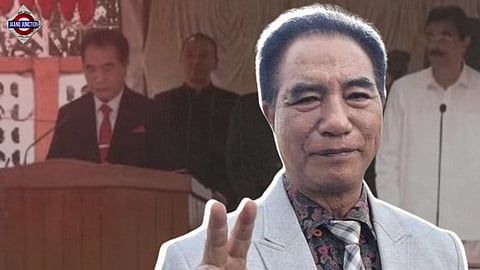

Zoram People's Movement (ZPM) leader Lalduhoma on Friday took oath as the Chief minister of Mizoram. Party leader Vanlalruata was also sworn in as a Cabinet Minister at the Raj Bhavan where Mizo National Front leader and outgoing chief minister Zoramthanga was present.
All MNF MLAs, including its legislature party leader Lalchhandama Ralte, attended the event. Former chief minister Lal Thanhawla was also present there.
Lalduhoma met the Governor on Thursday and staked a claim to form the government in the state.
"We talked about the formation of the new government. He had asked me to form government which will be done on Friday and next week we'll have the first session. We are very happy and were very honored by the Governor. Our priority is to buy agriculture products and we have selected four items for that," he said after meeting the Governor.
Following Monday's assembly polls, the Zoram People's Movement (ZPM) secured a decisive victory, unseating the reigning Mizo National Front (MNF) with a substantial lead, securing 27 seats. The Bharatiya Janata Party (BJP) and Congress lagged significantly behind, securing two and one seat, respectively.
ZPM media cell general secretary Eddy Zosangliana said that the Val Upa Council, an advisory body of the party, met Lalduhoma on Wednesday to decide the formation of the council of ministers. With a 40-member assembly, Mizoram can have 12 ministers, including the chief minister.
After forming the government, Lalduhoma promised that his party would make a resource mobilization team for financial reforms. “Mizoram is facing financial crises... That is what we are going to inherit from the outgoing government...We are going to fulfill our commitment... Financial reform is necessary, and for that, we are going to make a resource mobilization team."
He also emphasized that should his party assume power in the November 7 assembly elections in Mizoram, farmers would be accorded the highest priority. He additionally committed to the construction of three new hydroelectric dams, aiming to generate approximately 300 MW of power, and assured that there would be no increase in power tariffs for the ensuing five years.
